
Kamina Funkstation was a large wireless transmitter in the German-occupied colony of Togoland (now Togo) in West Africa.

Kamina Funkstation was a large wireless transmitter in the German-occupied colony of Togoland (now Togo) in West Africa.
The wireless station was built by Telefunken near the village of Kamina, in Togoland, where the nearest large settlement was Atakpamé about 5 km (3.1 mi) away. [1] The transmitter was built on behalf of the German government, as part of a secret communications strategy as cable communications were subject to disruption at time of war. [2] The second step of this strategy was to build wireless stations with a range of at least 4,000 km (2,500 mi). [3] The station was designed as a node and switching point for other shorter range German colonial radio stations. [4] There were initially four coastal stations with ranges of only 1,500 km (930 mi) in German colonial Africa, but the Kamina station as planned could connect with these, Germany, German East Africa (Tabora) and Windhoek, at least 3,700 km (2,300 mi) away. [5] The initial key decision to build a station in Togo was made in December 1910. [6] Construction was from 1911 to 1914. [7] By 1913 reasonably good reception from a 100 kW transmitter 5,200 km (3,200 mi) away in Germany was achieved, [8] with full reception by April 1914. [9] The station had its own power station for its 100 kW transmitter, [1] with the antenna of a total length of 3,800 m (12,500 ft) strung between four 100 m (330 ft) and three 75 m (246 ft) high steel towers. [9]
At the outbreak of the First World War, the station repaid its construction costs several fold by promptly informing all German merchant ships in the South Atlantic and Caribbean to visit neutral ports. [10] It also undertook military and intelligence work but it transpired that the German colonial forces had no plan in place for its organised defence. [11] Shortly after the beginning of the First World War, Togoland was invaded by British and French forces from the neighbouring colonies of Gold Coast (Ghana) to the west and French Dahomey (Benin) to the east in the Togoland campaign. The station was destroyed on night of August 24th to 25th, 1914 by the operators to prevent it from coming under British and French control. [1]

German Samoa was a German protectorate from 1900 to 1920, consisting of the islands of Upolu, Savai'i, Apolima and Manono, now wholly within the Independent State of Samoa, formerly Western Samoa. Samoa was the last German colonial acquisition in the Pacific basin, received following the Tripartite Convention signed at Washington on 2 December 1899 with ratifications exchanged on 16 February 1900. It was the only German colony in the Pacific, aside from the Jiaozhou Bay Leased Territory in China, that was administered separately from German New Guinea.

The German colonial empire constituted the overseas colonies, dependencies, and territories of the German Empire. Unified in 1871, the chancellor of this time period was Otto von Bismarck. Short-lived attempts at colonization by individual German states had occurred in preceding centuries, but Bismarck resisted pressure to construct a colonial empire until the Scramble for Africa in 1884. Claiming much of the remaining uncolonized areas of Africa, Germany built the third-largest colonial empire at the time, after the British and French. The German colonial empire encompassed parts of several African countries, including parts of present-day Burundi, Rwanda, Tanzania, Namibia, Cameroon, Gabon, Congo, Central African Republic, Chad, Nigeria, Togo, Ghana, as well as northeastern New Guinea, Samoa and numerous Micronesian islands.

Togoland, officially the Togoland Protectorate, was a protectorate of the German Empire in West Africa from 1884 to 1914, encompassing what is now the nation of Togo and most of what is now the Volta Region of Ghana, approximately 90,400 km2 in size. During the period known as the "Scramble for Africa", the colony was established in 1884 and was gradually extended inland.

Atakpamé is the fifth largest city in Togo by population, located in the Plateaux Region of Togo. It is an industrial centre and lies on the main north-south highway, 161 km north of the capital Lomé. It is also a regional commercial centre for produce and cloth.
Bafilo is a city in Togo south of Kara and north of Sokode in Tchaoudjo Region.

French Togoland was a French colonial League of Nations mandate from 1916 to 1946, and a UN trust territory from 1946 to 1960 in French West Africa. In 1960 it became the independent Togolese Republic.

German West Africa (Deutsch-Westafrika) was an informal designation for the areas in West Africa that were part of the German Colonial Empire between 1884 and 1919. The term was normally used for the territories of Cameroon and Togo. German West Africa was not an administrative unit. However, in trade and in the vernacular the term was sometimes in use.

The German West African Company, in German Deutsch-Westafrikanische Gesellschaft / Compagnie, was a German chartered company, founded in 1885. It exploited the two German protectorates in German West Africa but did not actually govern them — unlike its counterpart in German East Africa.

The African theatre of the First World War comprises campaigns in North Africa instigated by the German and Ottoman empires, local rebellions against European colonial rule and Allied campaigns against the German colonies of Kamerun, Togoland, German South West Africa, and German East Africa. The campaigns were fought by German Schutztruppe, local resistance movements and forces of the British Empire, France, Italy, Belgium, and Portugal.

Georg Wilhelm Alexander Hans Graf von Arco was a German physicist, radio pioneer, and one of the joint founders of the "Society for Wireless Telegraphy" which became the Telefunken company. He was an engineer and the technical director of Telefunken. He was crucial in the development of wireless technology in Europe.
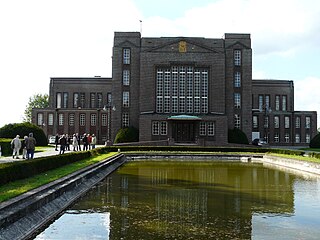
Nauen Transmitter Station in Nauen, Havelland district, Brandenburg, Germany, is the oldest continuously operating radio transmitting installation in the world. Germany's first high power radio transmitter, it was founded on 1 April 1906 by Telefunken corporation and operated as a longwave radiotelegraphy station through World War II, and during World War I became Germany's main link with the outside world when its submarine communications cables were cut. Upgraded with shortwave transmitters in the 1920s it was Germany's most advanced long range radio station, continually upgraded with the latest equipment and serving as an experimental station for Telefunken to test new technology. At the end of World War II, invading Russian troops dismantled and removed the transmitting equipment. During the Cold War it served as the GDR's international shortwave station Radio Berlin International (RBI), and was the East Bloc's second most powerful radio station, disseminating Communist propaganda to other countries. Since German Reunification in 1991 it has been operated by Deutsche Telekom, Germany's state telecommunication service. The original 1920 transmitter building designed by architect Herman Muthesius is still used; it is one of the many remaining buildings designed by that architect that is a protected cultural heritage site.

The Togoland campaign was a French and British invasion of the German colony of Togoland in West Africa, which began the West African campaign of the First World War. German colonial forces withdrew from the capital Lomé and the coastal province to fight delaying actions on the route north to Kamina, where the Kamina Funkstation linked the government in Berlin to Togoland, the Atlantic and South America.

The Affair of Agbeluvoe ["affair" a military engagement by a force less than a division] (Agbéluvhoé, Beleaguer or the Battle of Tsewie, was fought during the First World War between invading British Empire soldiers of the West African Rifles and German Polizeitruppen in German Togoland on 15 August 1914. British troops occupying the Togolese capital of Lomé on the coast, had advanced towards a wireless station at Kamina, 100 mi inland on hills near Atakpamé. The only routes inland were by the railway and road, which had been built through dense and almost impassable jungle.

The Affair of Khra [Chra] was fought by British and French troops against German Polizeitruppen in the village of Khra, near the Khra River on 22 August 1914, during the Togoland Campaign of the First World War. The German defenders mined the approaches to the river, blew the bridges and dug in around the village on the far bank, ready to defend the crossing with rifles and three concealed machine-guns. The British–French attack was repulsed and then a German counter-attack was ordered but many troops refused the order and the attack was not delivered.
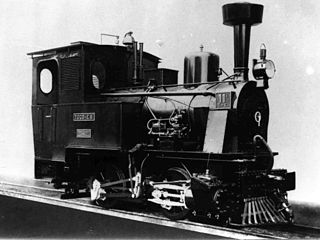
Rail transport in Togo began in 1905.
Cinema in Togo began with German colonial filmmakers visiting Togoland. The French attempted to suppress cinema in French Togoland. After the Togolese Republic gained independence in 1960, Togo's national government encouraged cinema, though government support for cinema lapsed when French funding was withdrawn in the 1990s. More recently, however, the film industry is once again growing in Togo.
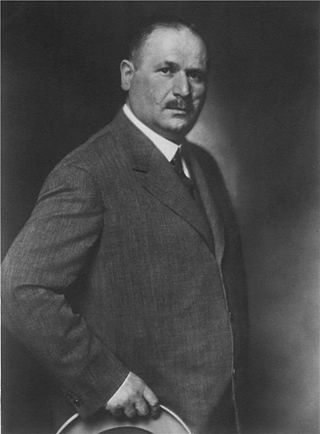
Hans Bredow was a German radio broadcasting pioneer and the first chairman of Weimar Germany's National broadcasting service. He is regarded as the "father of German broadcasting".
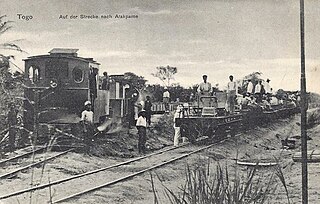
The Lomé–Blitta railway was the third railway line built in today's Togo. It was also called Hinterlandbahn or Baumwoll-Bahn.

Hans-Georg Wilhelm von Doering was a German officer and the last colonial governor of German Togoland before surrendering the position during the Togoland campaign of the African theatre of World War I.
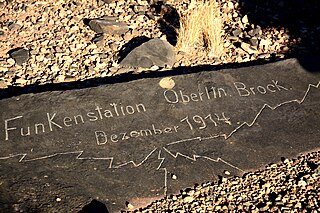
A series of radio stations in German South West Africa enabled the Germans to communicate between their colony, German South West Africa, and their motherland, the German Empire. They also used radio to communicate within the German South West Africa territory and with German boats at sea. The stations utilized spark-gap transmitters.